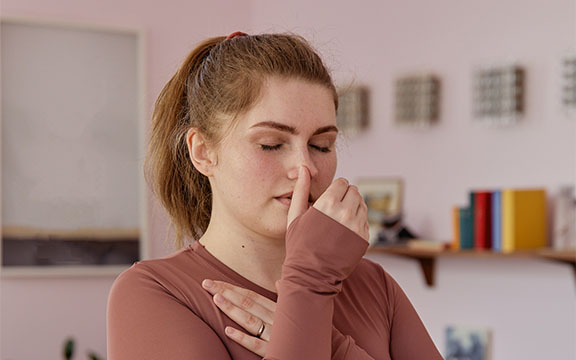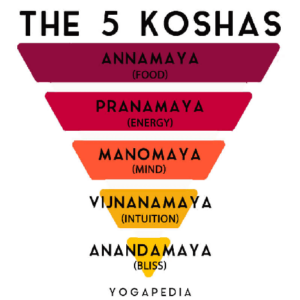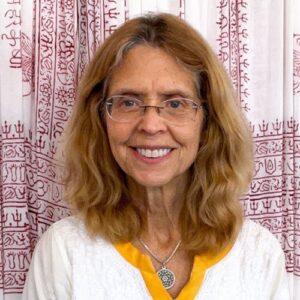
Photo: Darina Belonogova via Pexels.
Over ten years ago, a yogi friend went hiking up a steep mountain. She was wearing good shoes and enjoying the challenge, as well as the stunning view upon reaching the peak. Soon after she began her descent, she slipped and badly twisted her ankle. Immediately, she stopped and focused on prana (life energy) swirling through her ankle, healing, and strengthening. Within ten minutes she was able to continue her descent with no pain and no residual discomfort.
Another yogi had missed a step while in the dark and tore a ligament in his ankle. He too practiced visualizing the flow of prana through the affected joint. He also practiced several times each day a heart purification meditation and then mentally directed prana to the ankle. He was back to full time work in two days. This same yogi, who has been practicing pranayama diligently for over 50 years, was extremely sick during the pandemic with great difficulty breathing. The doctors thought he would die but he recovered and then rejuvenated himself to an even greater vitality than before, all at the age of 80 years-old.
During my bereavement counseling tenure, I met with many bereaved who were inconsolable over the loss of their loved one and often saying, “She went through so much—so many surgeries, treatments for this and that— and she always came through. Why didn’t she come through this time?” I would have to ask each one of them, “Each time she came back did she have the same vitality as before?” With no exception, everyone “came back” not quite the same as before. I explained to them that disease and treatments can take prana from us in order to survive. With each subsequent disease and treatment, more and more energy is depleted until they no longer have any reserves.
The yogi who survived Covid was able to because his body dipped into his energy reserves to keep him alive. While very sick he also used visualizations until he was again able to breathe a little bit better and then he added back his pranayama practice which rebuilt his energy reserves and revitalized his entire body and mind. These types of healings are not for the special few. Pranayama is a practice that anyone can do and slowly build to benefit from its full effects.
As pranayama works with the breath, it also works with the energy that maintains our life and level of vitality. The breath is our external focus to regulate the energy that rides with the breath. The prana then flows throughout our body via energy channels called nadis. This prana is the true revitalizing factor for our health of body and mind. In Yoga, we learn that we don’t have just one body, but we have five bodies or sheaths that are more and more subtle:
Annamaya Kosha – Physical body fed by food (that provides prana)
Pranamaya Kosha – Breath/Energy body fed by prana/breathing
Manomaya Kosha – Mind body, fed by prana in the form of thoughts
Vignanamaya Kosha – Intellect body, part of the mind that can be rational, see a bigger picture
Anandamaya Kosha – Bliss body, most subtle body that can easily resonate with our True Self
The koshas explain why pranayama has a strong effect on our body and on our mind. The Pranamaya Kosha is sandwiched between the physical and the lower mind and, hence, can easily affect both. The physical and the lower mind can also easily affect the flow of prana. We know this intuitively to be true. When we are angry our breathing changes to a strong huffing and puffing. Our face changes, our chest moves stronger, etc. When we are frightened our breathing can halt. When we consciously take a deep breath (usually more than just one), we start to calm down. The body’s muscles relax. Not easily recognized, the cancer of the mother I mentioned earlier, pulled energy from her “pranic bank account” too many times with no prior breathing practice to build it nor any practice to replace it.
I heard someone give testimony about his daughter who was in a horrific car accident and in the hospital with body parts in casts and not able to get out of bed at all. The one thing she could do was breathe and breathe she did! Whatever pranayama she could do, she did, and with visualizations (another tool that is extremely helpful). The doctors were so surprised that she was able to leave the hospital so much faster than they could have expected.
Margabandhu (director of the Integral Yoga Institute of New Jersey, master Yoga teacher and therapist) has many stories of healing through pranayama. He has been offering pranayama classes for many years now, directing students to not only use pranayama but to also add mudras, bandhas, and visualizations to direct energy to help heal the body. By doing so, they also find they become more content and able to flow with the ups and downs of life.
On the mental level, our lower minds are so often caught up in thoughts that trigger emotions, that trigger more thoughts and then more emotions—an emotional roller coaster of shoulda, coulda, wouldas and then being sorry we are thinking like this, being even more unhappy because we are unhappy! Whew! Fortunately for us, since the pranamaya kosha level butts up against the manomaya kosha, we can use pranayama to directly affect our minds. When we are angry and our breath changes to a huffing and puffing, we can change our breathing and whirlwind of emotions clear out! Dr. Amrita McLanahan has often shared a story of being on a beach with someone with whom she got into a serious argument. She was so angry! She remembered her pranayama and immediately sat down and started doing Nadi Suddhi, huffing and puffing along with it. Over the course of 15 minutes, her breath slowly calmed down to the point that she could calmly engage and help correct the situation.
I remember clearly the first time I used pranayama for my mental composure. It was early morning and I had this situation that involved feeling that I need to confront someone about their behavior. But, I also wanted to be clearheaded to handle myself properly. After 20 minutes of my regular pranayama practice, I couldn’t remember what the problem was!
That brings me to pranayama’s effect on the higher koshas: the higher mind and the bliss body. In the above story, in 20 minutes the thoughts of “my situation” were gone completely. In The Yoga Sutras of Patanjali, Book II, sutra 52, we read: “As its results, the veil over the inner Light is destroyed.” In this commentary, Swami Satchidananda (Gurudev) shares, “The mind is a veil woven of thoughts. It has no substance by itself. If we pull the thoughts out one after the other, when they have all been removed, there is no mind left.”
The Inner Light can never be destroyed; it is our True Self. Gurudev continues saying, “Our basis is the Self. As long as we identify with the body or mind, we feel we are mortal. Pranayama indirectly helps us to understand our Oneness, the never-changing One, because it removes the veil. And it is an easy practice. Not many people come to meditation class, but hundreds and thousands come for asanas and pranayama.” As our practice deepens and the thoughts are released, we can pierce through the last two koshas and go beyond the mind and experience the True Self, which then informs how we live our life from then on.
There are precautions though. As we develop and refine our pranayama practice our diet also has to be refined. Heavy foods will disrupt digestion and make it difficult to practice pranayama. Margabandhu practiced for 8 months, four sittings a day of pranayama. Then he overindulged in rich foods and got so sick. Preferring the positive effects of pranayama he adjusted his diet and he adjusted his pranayama practice so that he could serve more.
Our mental status can be destabilized if we push too hard to develop our pranayama practice to the point that the nadis are compromised and the flow of prana is disrupted, possibly making the mind feel very confused, disoriented, scared, etc. Keeping the precautions in mind, as Yoga teachers, developing our own regular pranayama practice can help heal both our bodies and minds, as well as to further inspire our students.
About the Author:
 Rev. Premajyothi Devi, IYM, E-RYT-500 is a certified Integral Yoga teacher and minister. She has a Master’s in Counseling Psychology and was a Bereavement Counselor for a large NJ hospice for a number of years. Premajyothi has been acting as Assistant to the Director of the NJ IYI since 2010 and a regular Hatha Instructor since May 1999. As a certified Basic Yoga Teacher Trainer, she loves offering the great teachings of Integral Yoga to the next generation of Yoga teachers. More info about her here.
Rev. Premajyothi Devi, IYM, E-RYT-500 is a certified Integral Yoga teacher and minister. She has a Master’s in Counseling Psychology and was a Bereavement Counselor for a large NJ hospice for a number of years. Premajyothi has been acting as Assistant to the Director of the NJ IYI since 2010 and a regular Hatha Instructor since May 1999. As a certified Basic Yoga Teacher Trainer, she loves offering the great teachings of Integral Yoga to the next generation of Yoga teachers. More info about her here.
Medical Disclaimer: Integral Yoga Magazine offers only information and this or any other article should not be taken as medical advice or diagnostic. You should consult your health practitioner before starting any new health regime or changing your current regimen. This is particularly important if you are overweight, pregnant, nursing, regularly taking medications, or have any existing medical conditions. Beginning a new practice (or increasing the frequency/length of a current practice) may not be recommended. Consult a certified Yoga teacher or therapist first. This website may not be tailored to your current physical and mental health. We accept no liability whatsoever for any damages arising from the use of this website.

